Fall 2023
Enjoy veggies from your garden all year long!
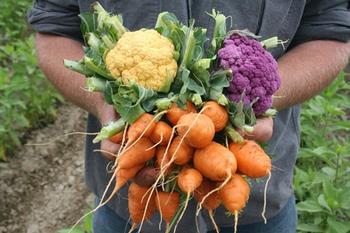
Cool season, warm season: what it means and why it matters
While there may be four seasons, edibles mostly fall into two classifications: cool-season crops and warm-season crops.
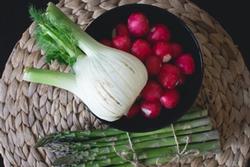
These are the alliums (onions, garlic, leeks), artichokes, asparagus, brassicas (broccoli, cabbage, cauliflower), greens, peas, and root vegetables. They grow best when air temperatures are 55°F to 75°F and soil temperature is about 40°F. They tolerate light freezes.
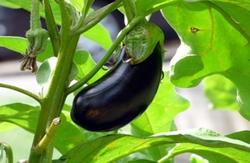
These includes beans, cucumbers, eggplant, annual herbs, peppers, tomatoes, and squash. These crops grow best when air temperatures are 65°F to 92°F and soil temperatures are 60°F to 65°F.
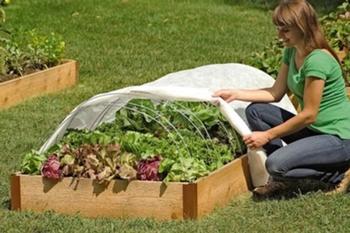
Timing is everything
In the edible garden, knowing when to plant is critical and can mean the difference between success and failure. Generally, roots prefer warm soil; establishing plants while the soil is still warm gives them a better chance to develop a strong root base. Even so, many seeds and some plants, like bareroot artichoke and starts of onions and asparagus, can be planted as early as January; brassicas, chard, leeks, and peas can be started in February and March. Use our planting calendar, including this at-a-glance version, to guide you through the year.
What to plant
UC Marin Master Gardeners have grown many varieties of edibles to identify those that grow well in Marin's microclimates, are resistant to pests, produce well, and have good flavor. Here is a full list of recommended edibles for Marin. Depending on where you live, there’s still time to plant favorites such as ‘Green Globe’ artichokes, ‘Snow Crown’ cauliflower, ’Toscano‘ kale and ’Champion‘ collard greens. Refer to our detailed grow sheets to learn about more varieties and how best to grow them.
Special strategies to maximize crops and minimize problems
Though the principles of successful edible gardening are the same throughout the year, additional techniques and strategies are useful to creating a year-round edible garden.
- Succession gardening: This is a master plan you create for the garden from season to season. It reminds you when it’s time to clear those summer vegetables and plant your cool-season crops, or when to sow and plant alongside fading spring vegetables with a view to summer’s bounty.
- Succession planting: Succession planting provides continuous crop output within the season by sowing seed of a given crop at one- to two-week intervals. For example, you can stagger corn production by sowing seed again when the first plants are one to two inches tall. Many edibles, such as beans, turnips, seasonal lettuce, and beets, are well-suited to this practice.
- Intercropping: Intercropping makes the most of smaller gardens. By planting early maturing crops between rows of late maturing crops, you increase the production of a small area. Beans, radishes, green onions, or seasonal leaf lettuce may be planted between rows of tomatoes, peppers, or corn. The quicker-maturing plants will be harvested before the others become large.
- Crop rotation: Crop rotation is the practice of changing the location of edible crops from year to year to enhance soil fertility and lower the risk of pests and diseases. Even if you have limited space, try to avoid planting exactly the same crop or crops from the same plant family year after year in the same part of the garden. For example, do not follow melons with cucumbers or squash, and do not plant peppers, eggplant, or potatoes where tomatoes grew the year before.
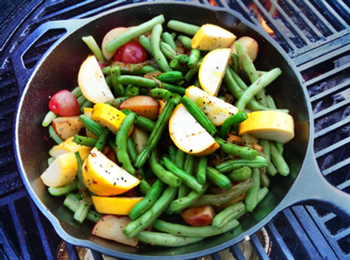
No matter the season, follow these principles for successful edible gardening throughout the year:
- Plant what you like to eat. That way, you will have your own delicious produce not only for your summer picnics but also for your holiday meals!
- Practice good garden hygiene. Cleaning up debris at the end of each season/harvest is your first line of defense against disease and pests.
- Provide fertile, well-drained soil. After a long growing season, amend the soil with a generous serving of compost that will give the new crop a fresh shot of balanced nutrients.
- Think about how sun travels through your garden throughout the year. Fall/winter sun will be lower in the sky and the shadows cast by buildings and trees longer. Even winter vegetables like at least six hours of sun each day.
- Know your soil temperature. Edible crops are not only sensitive to air temperatures; they are also sensitive to soil temperatures. Here’s how to test your soil’s temperature.
- Maintain irrigation until regular rains arrive. If rainfall is not consistent, keep the soil moist to protect your edibles from variable temperature or drought stress. A good mulch layer can help keep soils moist.
- Pay attention! Take time to inspect your garden every one to two days. Disease and pests are much easier to address if you detect them early, rather than once they are well established.
Bon appetit!
